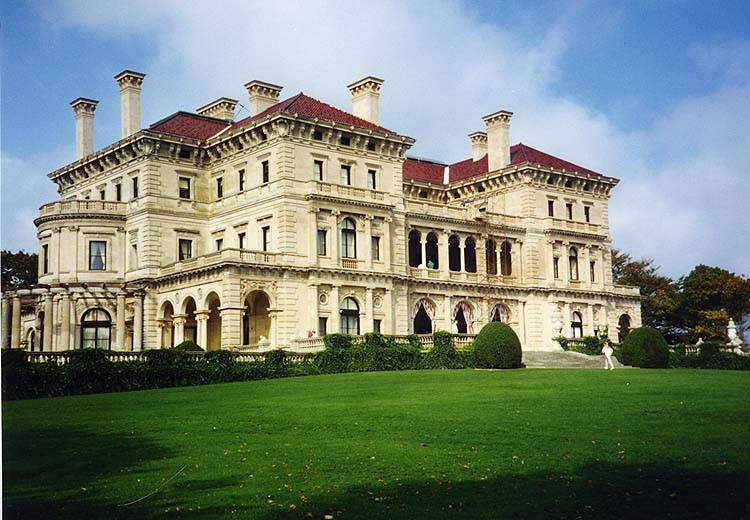The Breakers
Introduction
Text-to-speech Audio
Images

Backstory and Context
Text-to-speech Audio
Commodore Cornelius Vanderbilt (1794-1877) established the family fortune in steamships and later in the New York Central Railroad, which was a pivotal development in the industrial growth of the nation during the late 19th century. The Commodore's grandson, Cornelius Vanderbilt II, became Chairman and President of the New York Central Railroad system in 1885, and purchased a wooden house called The Breakers in Newport during that same year. In 1893, he commissioned architect Richard Morris Hunt to design a villa to replace the earlier wood-framed house which was destroyed by fire the previous year. Hunt directed an international team of craftsmen and artisans to create a 70 room Italian Renaissance- style palazzo inspired by the 16th century palaces of Genoa and Turin. Allard and Sons of Paris assisted Hunt with furnishings and fixtures, Austro-American sculptor Karl Bitter designed relief sculpture, and Boston architect Ogden Codman decorated the family quarters.
The Vanderbilts had seven children. In 1915, Alfred Gwynne Vanderbilt was on the steamship Lusitania when it was sunk off the coast of Ireland at the start of World War I. As the ship went down, he gave his life jacket to a woman who could not swim, and as a result, he lost his life.
Their youngest daughter, Gladys, who married Count Laszlo Szechenyi of Hungary, inherited the house on her mother's death in 1934. An ardent supporter of The Preservation Society of Newport County, she opened The Breakers in 1948 to raise funds for the Society. In 1972, the Preservation Society purchased the house from her heirs.
